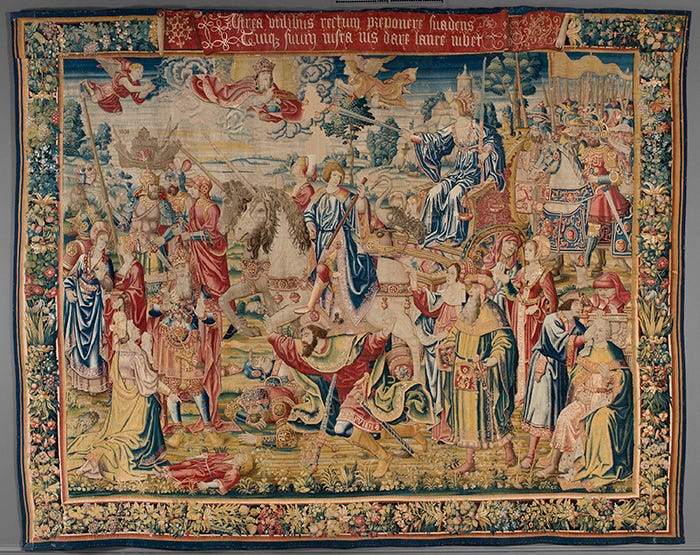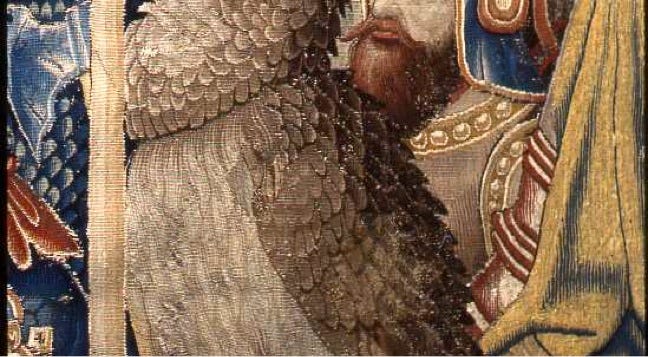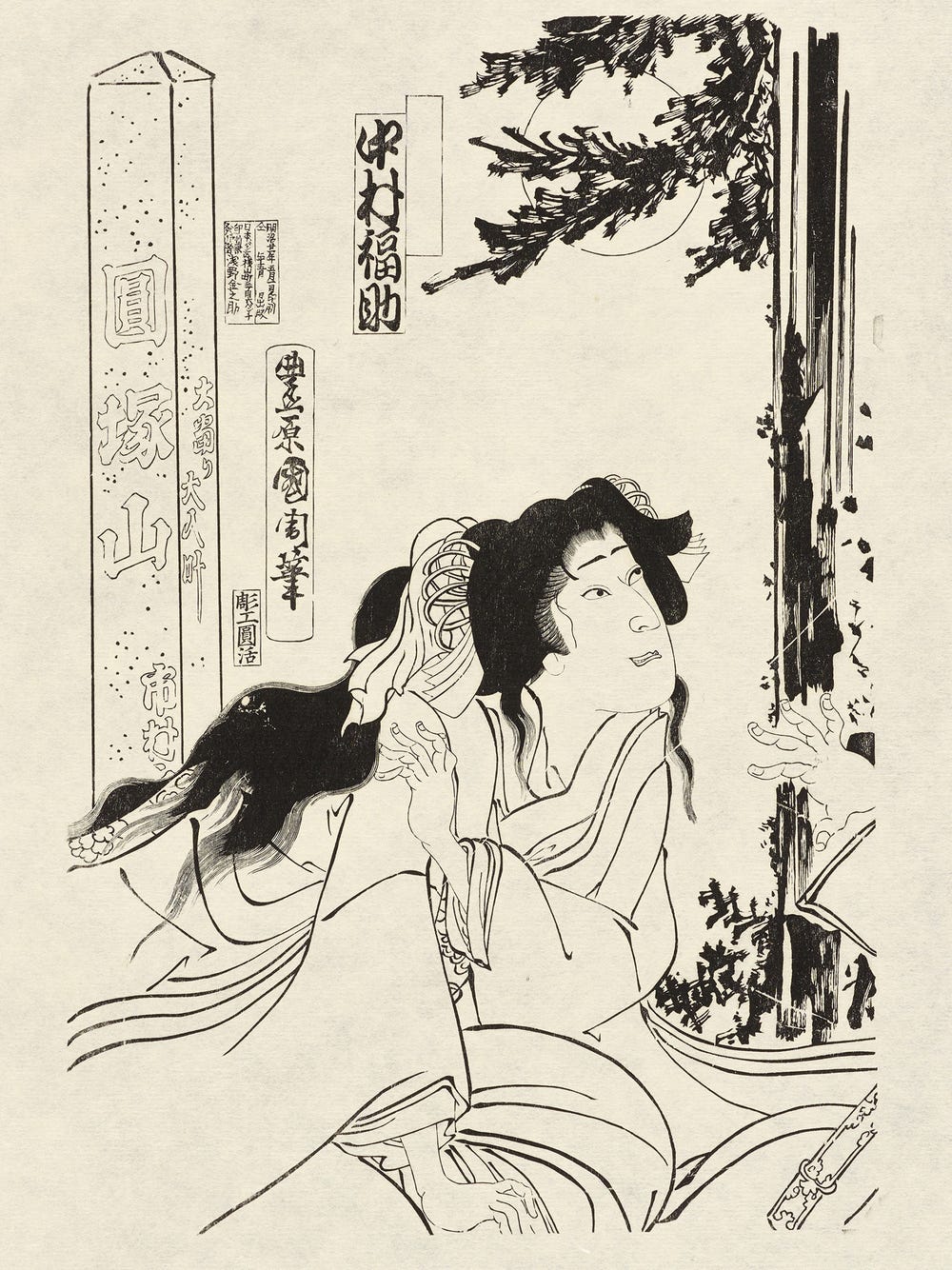For the first time ever, three prized tapestries from the Fine Arts Museums of San Francisco’s permanent collection will be exhibited together in the Legion of Honor’s Gallery 1. The entire series, known as The Triumph of the Seven Virtues, consists of seven tapestries that depict allegorical representations of the theological virtues — Faith, Hope, and Charity — and the cardinal virtues — Temperance, Prudence, Justice, and Fortitude. While 10 museums in Europe, the United States, and Russia possess tapestries from this series, the Fine Arts Museums have The Triumph of Fortitude, The Triumph of Prudence, and the only extant example of The Triumph of Justice.
Triumph of Justice from The Triumph of the Seven Virtues Series, ca. 1535. Belgium, Brussels, Flemish. Wool, silk; tapestry weave. Gift of The William Randolph Hearst Foundation. 1957.125
Approximately 15 by 18 feet in size, Fortitude, Prudence, and Justice are among the largest and most fragile artworks in the Museums’ collection. A combination of environmental conditions, usage, the delicate media that make up the tapestries, and previous attempts at repairs led to their degredation over time, so for the past 20 years The Triumphs have been undergoing conservation treatment. International experts, museum conservators, interns, and long-time textile lab volunteers have contributed to the care and treatment of these exemplary works of art, and their exhibition is the result of a truly monumental group effort.
Providing these fragile pieces with greater support was of foremost importance to their overall conservation. First, a “second skin” comprised of a layer of loosely woven linen scrim fabric was secured to the reverse of each tapestry.
For the weak areas in Fortitude and Prudence, fabric patches were also stitch-supported on each tapestry’s backside. New wool warp, custom dyed to match, was then stitched over the patches on the front of each tapestry. Examples of Fortitude and Prudence still exist elsewhere, so conservators were able to reference them for accuracy. After the patches were applied, the original pattern was reintroduced using wool yarn and polyester thread.
The case of the eagle depicted in Fortitude not only illustrates how conservators used extant examples to make appropriate repairs, but also how this work was conducted in the years before the digital revolution.
Seated on a chariot drawn by lions, the personification of Fortitude is shown facing left. At her feet sits an enormous eagle.
As the result of a previous repair, the eagle’s wing was disfigured.
By consulting other examples of the Fortitude tapestry, conservators were able to make a new repair based on the original feather pattern.
This treatment, however, took place prior to the rise of digital photography and the Internet. Using film photography and a Xerox machine, conservators were able to reproduce the pattern by scaling the photocopy and using the “brick-stitch” technique to fill out the bird’s missing feathers.
A striking example of how conservation treatments can reveal previously indecipherable meaning can be seen in the mistaken identity of Cloelia in Fortitude. Pictured on horseback at the far left of the composition is a woman whose name had been previously repaired to read “Cloelia.”
During treatment, however, our conservators discovered that the name had originally contained the letter “h” and should read “Chloelia.”
Prudence introduces yet another intriguing female character, this one named Abigael. In the lower right corner of the tapestry, Abigael kneels before King David. Her long dress has deep folds and is woven of luxurious yellow silk, which is quite fragile.
Triumph of Prudence from The Triumph of the Seven Virtues Series (detail), ca. 1550. Belgium, Brussels, Flemish. Wool, silk; tapestry weave. Gift of the Provident Securities Company. 62.19.3
Triumph of Prudence from The Triumph of the Seven Virtues Series (detail), ca. 1550. Belgium, Brussels, Flemish. Wool, silk; tapestry weave. Gift of the Provident Securities Company. 62.19.3
Her name appears in a panel across her upper back, but the portion just below it exhibits damage, which conservators were able to carefully stabilize.
For Justice, cotton patches painted with fabric paint and minimal patterning were placed behind each hole. Because Justice is the only one of its kind, and patterns from the missing areas cannot be referenced against other examples, very little patterning was added to the patches.
A common rule of thumb among conservation professionals is that a treatment should be discernable at six inches, but not at six feet. This is particularly applicable to the conservation of monumental tapestries, when the treatments should allow viewers to enjoy the tapestry as a whole while still being able to distinguish original work from repair.
Triumph of Justice from The Triumph of the Seven Virtues Series (detail), ca. 1535. Belgium, Brussels, Flemish. Wool, silk; tapestry weave. Gift of The William Randolph Hearst Foundation. 1957.125
After their 20-year makeover, the tapestries were finally ready to go on display at the Legion of Honor.


















